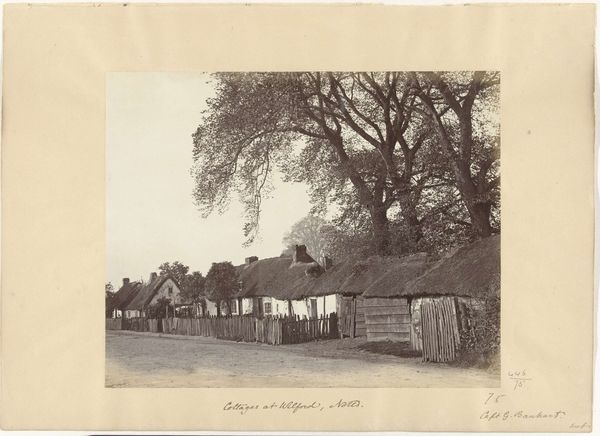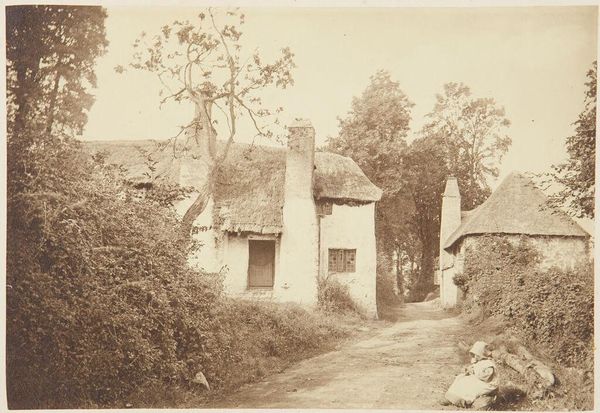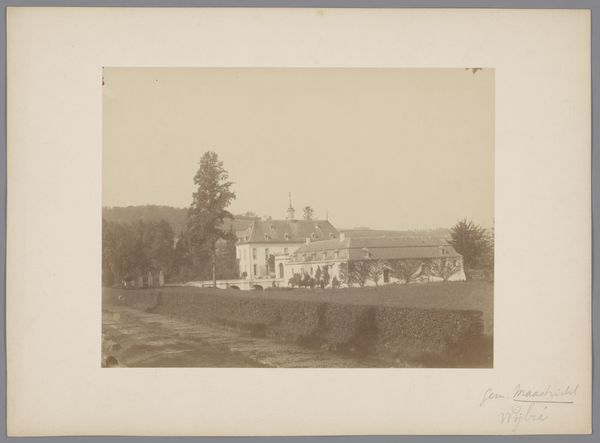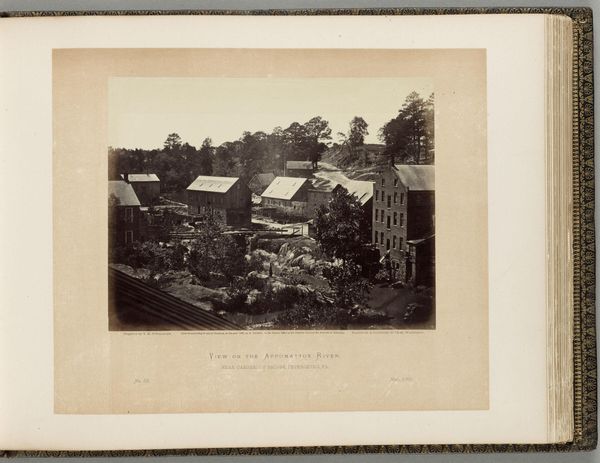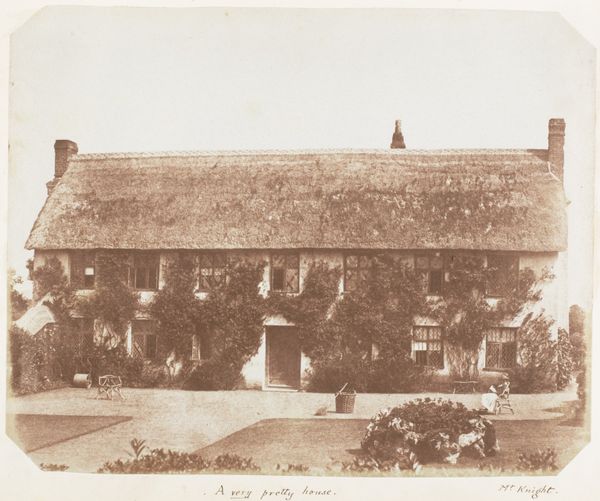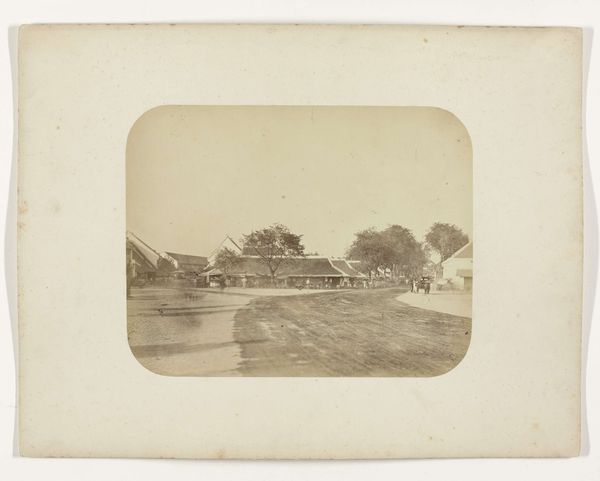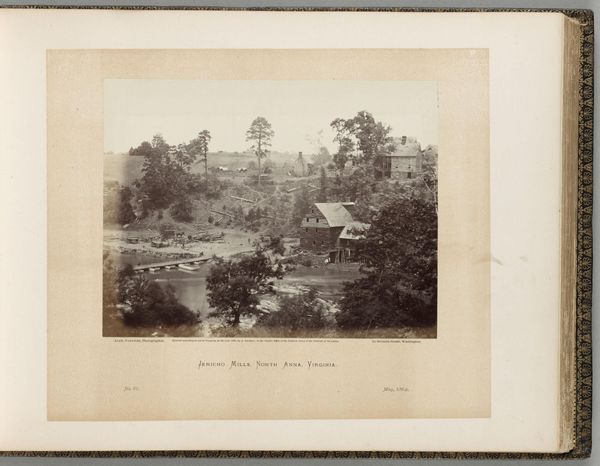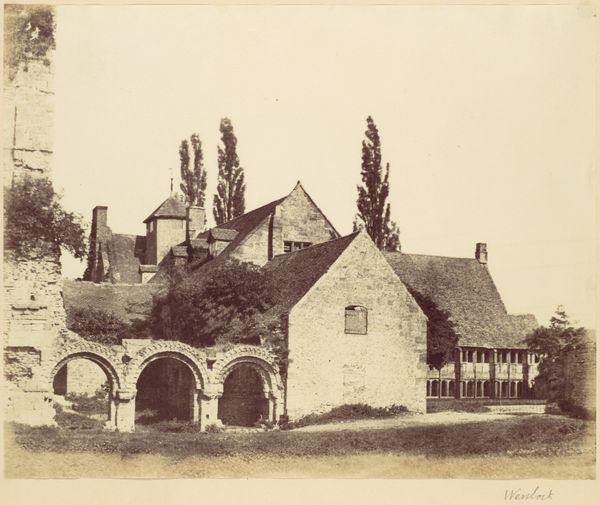
photography
#
landscape
#
etching
#
photography
#
realism
Dimensions: height 233 mm, width 289 mm, height 270 mm, width 377 mm
Copyright: Rijks Museum: Open Domain
Editor: This photograph, "Huizen in Wilford, Nottinghamshire," was taken by George Bankart sometime between 1855 and 1890. It’s a sepia-toned image of cottages, framed by a rustic wooden fence and foliage. The scene feels quite pastoral and, in some ways, idealized. How do you interpret this work? Curator: It’s interesting to consider how photography, even early photography, shapes our perception of reality and place. This image, while seemingly straightforward, operates within a complex historical context. These cottages, captured in what appears to be a rural idyll, exist against a backdrop of rapid industrialization and urbanization in England. The romanticism is powerful. Editor: What do you mean by romanticism? Curator: It’s that idealized view, a sort of selective vision that tends to erase or at least soften the edges of harsher realities. These rural scenes often stood in stark contrast to the burgeoning factories and crowded cities. Images like these helped construct and reinforce a nostalgic view of the countryside, a yearning for a simpler past perhaps untouched by the complexities of modernity. How might that yearning reflect social inequalities of the time? Editor: So the photograph isn’t just a neutral document; it's actively participating in a dialogue about societal values? Curator: Precisely. It’s presenting an idea of English identity rooted in an agrarian past, likely overlooking the struggles and complexities of rural life itself. Who is this image for, and what is it trying to say about England at this moment in its history? Editor: That completely shifts my understanding. It’s no longer just a quaint picture; it's a statement, maybe even a political one. I hadn't considered the implications of selecting what to show—and what to omit. Curator: Exactly. And that, I think, is where the power of art truly lies. It's an invitation to look beyond the surface and consider the narratives woven into every image.
Comments
No comments
Be the first to comment and join the conversation on the ultimate creative platform.

